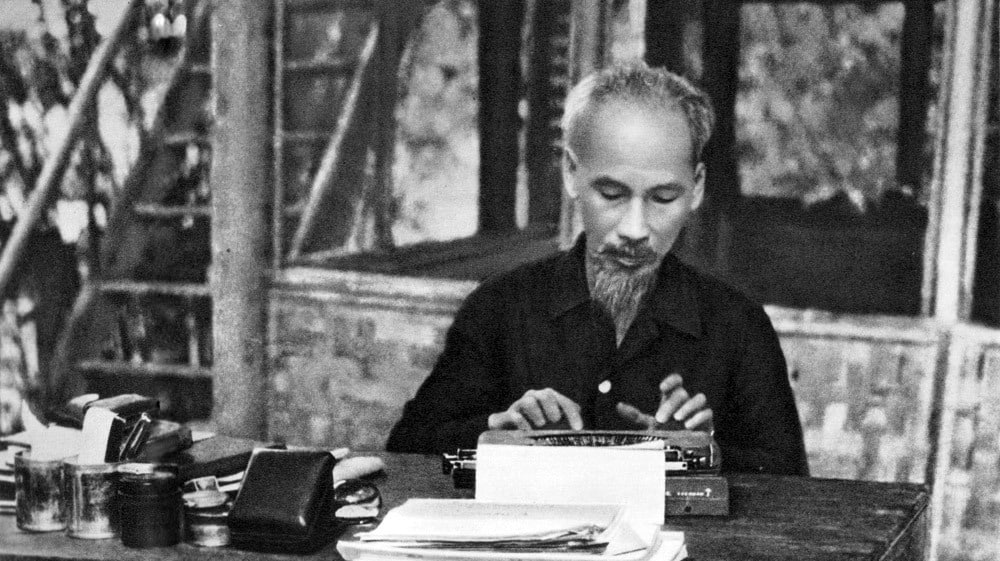We should not be shocked that a recent survey shows considerable support for socialism by Americans. In March 2017, the conservative magazine National Review reported on a survey by the American Culture and Faith Institute finding that four out of every ten adults say they prefer socialism to capitalism. Distressed, yes; surprised, no. After all, in the 2016 U.S. presidential primaries, the avowed democratic socialist Senator Bernie Sanders mounted a tough challenge to the Democratic frontrunner, Hillary Clinton, and utterly dominated the under-30 vote.
Why would we expect the millennial generation to understand the horrors of failed socialist and communist experiments of the past and present, or the crimes against humanity committed by Stalin, Mao, Pol Pot, Ho Chi Minh and communist regimes today? After all, these students are not taught much meaningful history, other than about race and gender, so they are unlikely to learn much about the tragedy of communism. Many probably could not even identify Stalin, Mao or Marx. If they don’t know who John Adams is, they are not going to know about Stalin et al. If they are not taught the history of enlightened liberty or the dark history of communism, why shouldn’t they conclude that socialism is a good idea?
Hitler Wasn’t the Only Mass Murderer
Students know about Hitler and the Nazis because fascism is bad. What they don’t learn in the classroom is that Stalin was every bit as evil as Hitler, and if overall murders of their citizens is the fulcrum to weigh evil, it’s pretty even. Estimates of the numbers of murders vary depending on methodology. Historian Timothy Snyder, author of Bloodlands: Europe Between Hitler and Stalin (2010), cautiously concluded that Hitler killed 11 to 12 million noncombatants, while Stalin killed 6 to 9 million.
What students learn about communism in a tangential way is that the Cold War between the United States and communist Soviet Union was unnecessary. Blame for the Cold War is placed on both sides. America used atomic weapons in Hiroshima and Nagasaki, according to this narrative, in part to intimidate the Soviet Union. The Vietnam War is presented as an example of American arrogance and the brutal bombing of people seeking independence from colonial rule.
The 1950s are portrayed as an era of anti-communist hysteria personified by Senator Joseph McCarthy, who supposedly ruined the lives of innocent dissenters by falsely accusing them of being communists. Those accused of communist subversion were driven from their jobs as government employees, university professors, public school teachers, Hollywood writers and directors. Students do not learn that the Soviet agents, working through Americans loyal to the Soviet Union, infiltrated the federal government in the 1930s and 1940s. These agents passed on top-secret information including military, diplomatic, strategic and nuclear secrets to the Soviet Union. These agents were committed Stalinists, however much they proclaimed themselves New Deal liberals.
Students in high school and college today are not taught that whatever Senator McCarthy’s flaws, the fact is that there was large-scale infiltration into government in that period. Most high school and university social science and history teachers have not even heard about the Venona papers, which revealed in the 1990s the extent of Soviet infiltration into the federal government during Franklin Roosevelt’s New Deal.
Even as most students do not encounter the dark history of communism in the classroom, popular culture offers a romantic review of communist revolutionaries. In America, we find Mao statues being sold; a Lenin monument in Seattle; and Che Guevara celebrated in public murals. Che Guevara is depicted as a folk hero—a kind of Robin Hood of his day, taking from the imperialists to give to oppressed peasants. If millennials pick up anything about failed communist experiments in Cuba and Venezuela, it is mostly that these countries failed because they had been exploited and oppressed by American imperialism. Students are told that Cuba under Castro made tremendous advances in education and health care. Venezuelans are starving today under a dictatorship, but who really is to blame? Not the communist thugs who came to power, but the United States for deliberately keeping these countries backward.
Philosopher George Santayana observed, and it has now become a cliché of sorts, that “Those who cannot remember the past are condemned to repeat it.” This quotation, it seems, is offered by teachers and professors at the beginning of most history courses. Its message is “Listen to me, students. What I am going to teach you will save you from past tragedies that could have been avoided if only the leaders and their people had learned from the past.” Compelling words, indeed; the problem is that students learn little about the tragic failure of communism. For all the focus on the victims of history, especially American history, the victims of communism are largely ignored.
What should students learn about the history of communism? Here is a basic outline for instruction.
Start with the Death Toll
The first fact that students should learn is the number of deaths under communism. Authors of The Black Book of Communism: Crimes, Terror, Repression, first published in 1996 in France and translated into an English edition in 1999 by Harvard University Press, offers an approximate account of the dead under communist regimes:
- U.S.S.R.: 20 million deaths
- China: 65 million deaths
- Vietnam: 1 million deaths
- North Korea: 2 million deaths
- Cambodia: 2 million deaths
- Eastern Europe: 1 million deaths
- Latin America, Africa, and Afghanistan: 3.4 million deaths.
This is a total of nearly 100 million deaths. The authors of The Black Book of Communism explicitly condemn Nazism, which was responsible for some 25 million deaths, but they note that Communists and Nazis were equally guilty of crimes against humanity. Nearly four times as many people were murdered under communist dictatorships as under Nazis.
The Black Book of Communism, edited by Stephane Courtois, caused a stir for equating communism with Nazism. Many leftist critics condemned the book because of this comparison. Yet the facts provided by the authors of this 800-page book are undisputable. Divided into 27 chapters, the book details the history and atrocities committed by each of the regimes. The first section of the volume examines the Soviet regime, exploring the failure of agricultural collectivism and the ensuing famine; the creation of the gulag system; and Soviet communism after Stalin. Chapters in this first section provide one of the best available short histories of the origins of Soviet communism, Stalinist terror and life under Soviet Communism.
Part Two of the book examines Soviet involvement in the Spanish Civil War in the 1930s. It should be required reading for anyone romanticizing Spanish anti-fascists. The third section looks at communism in Eastern and Southeastern Europe. The history is one of assassinations, purges and infiltration. In these chapters, readers learn just how effective communists were in creating a totalitarian police state. The final two sections examine communist regimes in China, North Korea, Vietnam and Laos, and Cambodia. These chapters make for gruesome and haunting reading.
This volume is too long to be assigned in any single class. But any one chapter shows just how evil communism is and why socialism fails. Those who believe that Nazism was worse than communism should read this book. Every single communist police state began with a call for social equality in the name of the downtrodden masses. The results were crimes against humanity on a massive scale.
Communist Subversion in America
A sizeable revisionist literature emerged in the last half of the 20th century portraying members of the Communist Party as misled idealists who struggled for civil rights, labor rights and international peace. The most recent addition to this revisionist history is Joan Brady’s Alger Hiss Framed: A New Look at the Case that Made Nixon Famous (2017). The author is best known for her novels. In this book she defends Hiss, a senior official in the U.S. State Department who was accused by Whittaker Chambers of espionage on behalf of the Soviet Union; attacks Hiss’s accusers for using Nazi-like tactics; and paints Chambers and Richard Nixon as unscrupulous and personally disturbed individuals.
Brady’s account appeals to those still willing to defend Hiss. The problem is that Brady’s book relitigates a case that should have been over when Hiss was sentenced to prison for perjury in 1950 concerning his alleged involvement in Soviet espionage in the United States. Any doubt about Hiss’s guilt has been further dispelled by Sam Tanenhaus’s magnificent Whittaker Chambers: A Biography (1998) and, more recently, Christine Shelton’s Alger Hiss: Why He Chose Treason (2013).
The books on the Hiss-Chambers case and the larger literature of Soviet espionage activities in the 1930s and 1940s (and even today) are not found in the classroom or popular culture today. This is somewhat surprising given all the political talk of Russian collusion, the success of the Amazon television series The Americans (about a Soviet spy apparatus in the 1980s U.S.), and the fact that in 2010, ten deep-cover Russian spies were arrested by the Federal Bureau of Investigation (FBI).
The Venona Project’s Revelations
The incongruity of the immense literature on KGB activities in the United States and what students are taught about the early Cold War Red Scare is mind-boggling. Students do not learn that for all the charges of anti-communist “hysteria” in America in the 1950s, Soviet intelligence had extensively penetrated the federal government. The full revelation of the extent of Soviet penetration into the federal government came in 1995 when the National Security Agency (NSA) released documents from the Venona project. Venona was the code name given to an intelligence operation launched in February 1943 by the U.S. Army’s Signal Intelligence Service, the forerunner of the NSA.
The Venona project focused on hundreds of coded commercial telegram messages sent by the Soviet embassy in the U.S. to Moscow. The breaking of the code in these messages was one of the great stories in spy history. These messages revealed that the Soviet intelligence agency, then known as the NKVD, had placed agents throughout the federal government, including the Army Signal Intelligence Service itself. The telegrams showed Soviet intelligence had placed spies in the White House, the FBI and various agencies in the Departments of State, Treasury and Agriculture. The deciphered telegrams uncovered more than 300 Soviet agents within the U.S. government. There were probably more who were not revealed.
The Venona project was kept secret from Congress and the general American public in the 1950s. In 1995, under pressure from Congress, the NSA began releasing these papers. A book capturing the drama of the Venona tapes is John Haynes and Harvey Klehr’s Venona: Decoding Soviet Espionage in America (1999), and further reading is recommended in Herbert Romerstein and Eric Breindel’s The Venona Secrets: Exposing Soviet Espionage and America’s Traitors (2001).
Soviet espionage had been exposed long before the release of the Venona files. Spy cases filled the newspapers of the day with coverage of congressional hearings and court trials. Americans read about Alger Hiss, the Rosenbergs, Nathan Silvermaster, William Remington, Igor Gouzenko, Klaus Fuchs, Judith Coplon and many others. Many of those charged asserted their innocence before Congress and in court. The Venona documents, had they been made available as evidence in those cases, would have confirmed that many of those charged were in fact Soviet agents. However, U.S. intelligence agencies preferred to keep the Venona project classified.
By learning about these cases, American students in classrooms today could place the Cold War and popular anti-communism in the 1950s in a larger context. What better reading is there than actual spy cases? Instead, students are taught that America in the early Cold War years was full of political demagogues such as Senator Joseph McCarthy and other vicious Red-baiters such as Richard Nixon who misled average Americans for political gain.
Timeless Messages of Chambers, Koestler
While students get a full dose of politically correct novels and memoirs telling about the plight of victims of racism and sexism, they are not introduced to one of America’s greatest autobiographies, Whittaker Chambers’s Witness, published in 1952 and republished in 2014. Nor will students encounter one of the great novels of the 20th century, Arthur Koestler’s Darkness at Noon (1940). Both Chambers’s autobiography and Koestler’s novel make for compelling reading, telling the reader more about human tragedy than rants such as Ta-Nehisi Coates’s Between the World and Me, which has found widespread adoption in high school and college classes.
Chambers’s Witness compares in grandeur to the autobiographies of Benjamin Franklin, Frederick Douglas and Henry Adams. Chambers is an elegant writer who reveals his soul, suffering, personal peculiarities and courage. In describing his arduous journey from Communist Party worker to Soviet spy to patriotic American Christian, Chambers speaks to the human compulsion to find goodness in the world, only to encounter evil, and eventually redemption. It is the stuff of all great autobiographies beginning with St. Augustine’s Confessions. For a generation brought up on the message of social justice—millennials—Chambers supplies a tale of how youthful idealism can be exploited by men of evil, in this case Stalinists. Today’s young social justice warriors similarly are being exploited by those who want to sow chaos in order to subvert freedom.
Arthur Koestler’s Darkness at Noon should be required reading for young Americans who are being misled by the siren call of socialism. Unlike George Orwell’s central character Winston Smith in the dystopian novel 1984, who is forced under torture to swear loyalty to the Party and Big Brother, Koestler’s central character is compelled by the logic of his loyalty to the party to make a false confession that he is an agent of reaction. Koestler’s novel is a shorter read than Orwell’s 1984, but no less brutal. The difference between the two novels is that Koestler shows the logic of the captive mind that allows for the recognition and acceptance of immediate evil in the belief that historical destiny necessitates malevolence.
Education is the best antidote to ignorance about communism. In early November 2017, President Trump’s White House designated November 7 as the National Day for the Victims of Communism in recognition of the 100th anniversary of the Bolshevik Revolution in Russia. “Over the past century, communist totalitarian regimes around the world have killed more than 100 million people and subjected countless more to exploitation, violence, and untold devastation,” the press release stated. “These movements, under the false pretense of liberation, systematically robbed innocent people of their God-given rights of free worship, freedom of association, and countless other rights we hold sacrosanct.” This commendable statement prompted a young “tech reporter” for the liberal news website BuzzFeed to tweet on November 7 that “‘Victims of Communism’ is a white nationalist talking point.” Widespread ridicule forced the tweeter to apologize and remove his tweet.
Of course, Americans are not the only ones in need of education about the false promises of socialism. On December 14, a young female “science editor” for BuzzFeed UK tweeted, “All I want for Christmas is full communism now.”
The Delusions of Today’s Youth
If large numbers of young Americans are declaring themselves in favor of socialism, they have not learned the lessons of history, and they are ignoring the current spectacular failures of socialism in Venezuela, North Korea or Cuba. It is not enough to ask them to point to any country where socialism has worked. Even in Western Europe, the democratic-socialist states are stagnant economically and socially. The facile answer offered to these failures is “So what? Socialism has not worked in the past, but socialism can work in the future.” Students need to learn from history that a perfect society is impossible to achieve because of human nature, but progress can be made by those who recognize the imperfections of mankind.
This was the message taught by the founders of our great nation, and it is the message of Jesus Christ.









This is what should be taught in High School. Maybe the time for public schools has come to an end. Charter School at least teach history and civic. Public schools have become a bastion of liberal dribble, turning the students into snow flakes. You don’t see that in home schooled kids ak James O’Keef.
The Errors of Russia is a chastisement. The Rosary is the weapon to use against communism
Today’s professors and democrat party are communists and facists so fix that and we fix our future. Second post of this comment and not sure why not posted. Afraid of truth?
Since the Democrat Party has devolved into worse than communists and facists it is no wonder our youth are brain washed
Great article! Required reading for every college student – AND professor!